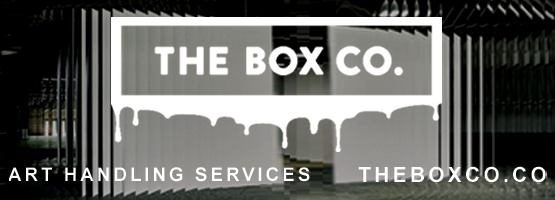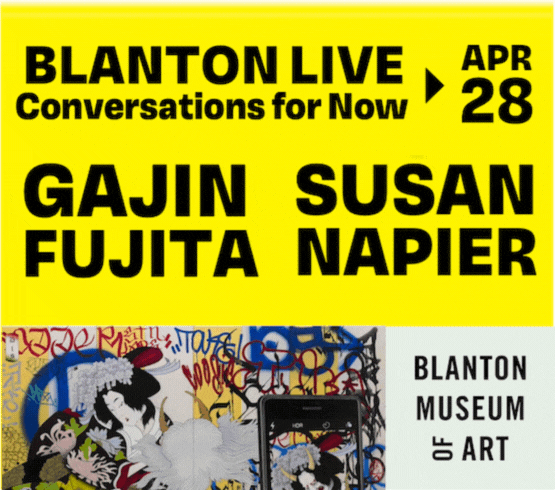If conversation can truly rise to an art form, Rice University’s Moody Center for the Arts has proven a most creative ground for such an idea-exchanging medium. At once a teaching, collaborating, exhibition and performance venue, the Moody Center has become the multidisciplinary place for art to spark ideas, dialogue and sometimes even innovations beyond the art world.
I recently sat down with Moody executive director Alison Weaver for her perspective on Moody’s past and future. Weaver says for this special year, they’ll keep that explorational formula, with two thematic group exhibitions, Soundwaves: Experimental Strategies in Art + Music (Jan. 27 – May 14, 2022) and Urban Impressions: Experiencing the Global Contemporary Metropolis (Sept. 16-Dec. 16) bookending one artist spotlight show featuring the Texas-born, New York-based artist Baseera Khan (June 3-August 27).The Moody’s fifth also corresponds with the tenth anniversary of one of Rice and Houston’s most beloved piece of public art, the James Turrell Twilight Epiphany Skyspace.
As Soundwaves curator, Weaver was inspired by the Skyspace’s connection to Rice’s Shepherd School of Music and its power to inspire artists of other media.“One of the ideas of this fifth anniversary is that we like to be a hinge between the campus and community, serving both of those audiences, explains Weaver. “We’re starting with the Skyspace on campus for the Soundwaves exhibition. Then, we’re starting with Houston [for Urban Impressions] and thinking about how global artists have responded to the urban environment.”
Though she greatly admires exhibitions of sound art, Weaver makes it clear that Soundwaves will not be such a show, as the majority of the artwork will be silent. Instead, the exhibition highlights artists who use sound as a generative and inspirational source for their visual artwork.
“What we’re really interested in is how these things are not separate for this group of artists,” says Weaver.
Several of the artists will present entirely new and site-specific pieces for the exhibition while other artists have selected previous creations. Weaver chose artists Nevin Aladağ, Nick Cave, Raven Chacon, Charles Gaines, Jennie C. Jones, Idris Khan, Christine Sun Kim, Sarah Morris, and Trevor Paglan—artists who “meaningfully engaged with sound and the visual.” She then had conversations with them about the work they wanted to include.
Such is the case of Anri Sala’s 2017 installation The Last Resort. Snare drums, each containing an embedded speaker, will be hung from the gallery ceiling and will play a modified concerto by Mozart. Houstonians might be familiar with Sala for his immersive film and sound installation Time No Longer, which was on view at the Buffalo Bayou Cistern in 2021.

1 ⁄6
Karole Armitage will create a new work for the Skyspace. Photo by Marco Mignani.

2 ⁄6
The Moody Center will present Open Dance Project in the world premiere of Bonnie and Clyde, an immersive dance work by Annie Arnoult, May 27-June 4th. Pictured: Open Dance Project in Annie Arnoult’s Dada Gert at the Moody Center for the Arts. Photo by Lynn Lane.
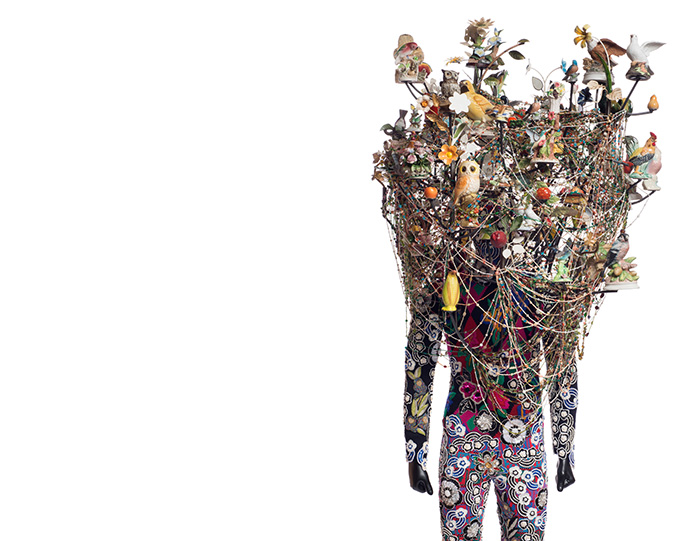
3⁄ 6
Nick Cave, Soundsuit, 2013. Courtesy of the artist and Jack Shainman Gallery, New York.

4 ⁄6
Jason Moran, Pas de Deux 1, 2021, courtesy of the artist.
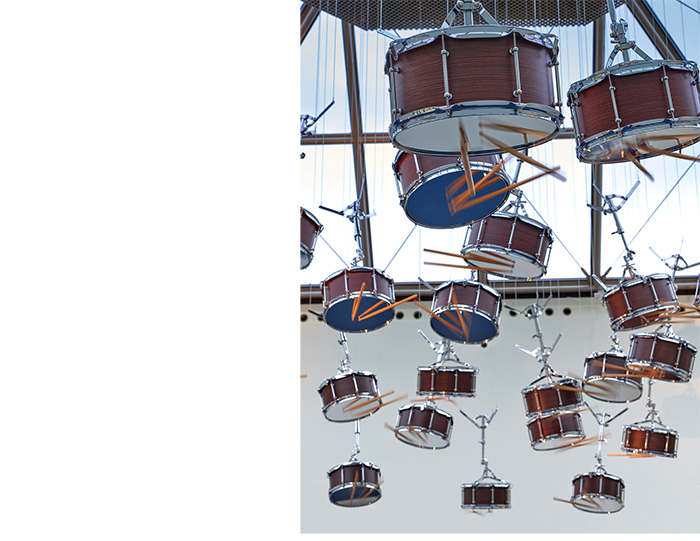
5 ⁄6
Anri Sala, The Last Resort, 2017, courtesy of the artist and Marian Goodman Gallery, photo (c) Rémi Villaggi, Mudam Luxembourg.
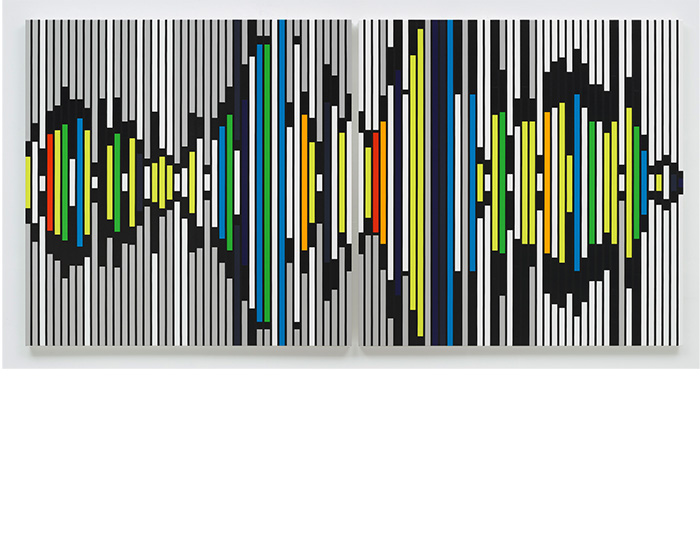
6 ⁄6
Sarah Morris, Precious Stone [Sound Graphs], 2018. Courtesy of the artist and Petzel, New York.
That amplification will also occur with new work from Jorinde Voigt, who created a large-scale wall drawing for the Menil Drawing Institute in 2019. Along with this sampling of national and international artists, Houstonians are getting to know, Soundwaves will also feature new work from hometown artists Jason Moran and Jamal Cyrus.
The summer brings Baseera Khan’s solo show featuring new commissioned work as well as existing sculpture, photography, collage, installation, and performance pieces. Weaver describes Khan’s work as exploring concepts of identity, culture, and migration. Evoking traditions from the east and global south, the artwork also relates to Khan’s experiences growing up in Texas.
In the fall, the Moody scans Houston’s skyline and beyond for Urban Impressions, another thematic group show featuring works from Rana Begum, Tiffany Chung, Julie Mehretu, Sohei Nishino, Robin Rhode, and Liu Wei. Weaver says they began with the inspiration of Houston as “this incredible experimental city with its diversity, and its lack of zoning, sprawl and its driving culture,” and then sought international artists who offer their own vision of what makes a Metropolis.
Reflecting Houston’s sprawling nature, the show will expand across the campus with site-specific installations and performances.
For the Skyspace’s own anniversary, the Moody has commissioned two new works by women, a musical composition by electroacoustic composer Elainie Lillios and a dance performance from choreographer Karole Armitage. Weaver looked for artists who will treat the Skyspace as more than a set for their own work.
“One of the goals in commissioning work in the Skypace is not to have the artwork be a venue. It’s a living, breathing work of art. So, in order to intervene in it, we need a partner who understands it and works with it in a way that amplifies both the original work of art and their own work,” says Weaver, noting that Armitage has a history of successful collaborations with visual artists and artworks.
“At the five-year mark, we’re interested in underscoring what we hope is our contribution to our citywide discourse around the arts through this unique lens of interdisciplinary dialogue.”
—TARRA GAINES



